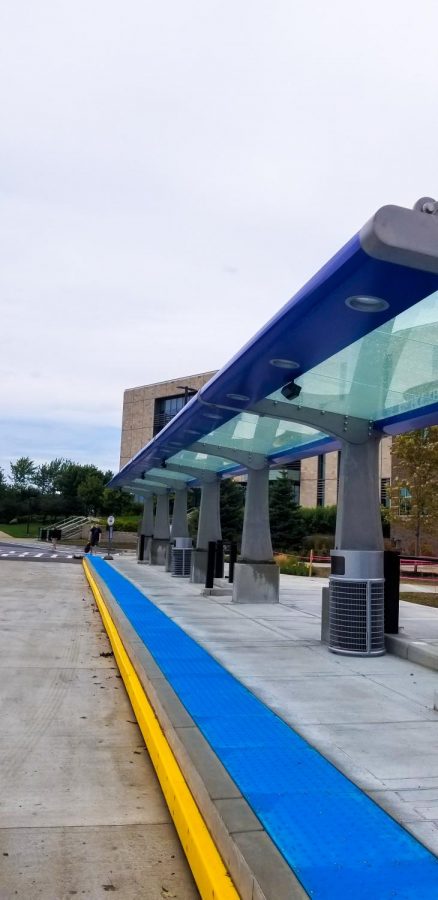GV rolls out daily pass, pay-to-park price increases alongside parking, bus improvements
Aug 19, 2019
The Grand Valley Police Department announced changes in parking for the 2019-20 school year, including an increase in various parking fees and improvements to the busing system.
Daily parking pass prices were raised to $10 from $6, and metered parking was increased in some places to $2.50 an hour to create uniformity.
GVPD Chief Brandon DeHaan said that the changes were mostly made to ensure students had places to park. Increasing the price of the daily passes promotes annual pass purchases and available parking for those who need it.
“We started looking at some of the other parking areas we have, and what we’re find is that our daily permits were undervalued,” DeHaan said. “Because there has been an increase over the course of many years for the annual permit, we’ve had to increase the daily permit. This to make the value of the annual permit feasible.”
DeHaan said that GVPD encourages all students who drive a car on campus to purchase an annual pass at the start of the school year, which is good until the end of classes in 2020.
The metered parking changes were also made to promote clarity and stay competitive with Grand Rapids parking prices. Increasing the pricing would help ensure the spots are for campus visitors and students.
“Specifically at the Grand Rapids campus, we were finding individuals that were not part of our community parking on our campus because the parking rates for visitors was actually lower than it was in the city of Grand Rapids,” DeHaan said. “What that has done is created an environment where we need spaces for visitors that are going to the Grand Valley campus, so we are increasing the pay-to-park locations on all of the campuses.”
“Tiered” metered parking rates based on location — such as higher parking rates at the Marketplace over academic areas — have been removed, DeHaan said. This was done to increase the consistency of short-term parking, which is the intention of those spaces, he said.
DeHaan said an increase in revenue was not the goal from these price increases. With a focus on sustainability, DeHaan said these changes should encourage students to use cleaner, less expensive public transportation, and keep the university from building additional parking at the expense of the environment.
“We talk about wanting to be sustainable, so save the Earth, save your money and ride the Rapid,” DeHaan said. “I really think that’s a strong component that’s out there. Students can save a lot of money by parking their vehicle and riding the Rapid.”
Aside from changes in pricing, GVPD is also promoting the use of public transportation with improvements made to bus stops around campus and the incoming Laker Line. Changes to bus stops include raised platforms, covered stops and snow-melting floors.
Construction changes also result in parking at the Kirkhof Center being limited to ADA parking instead of the metered and visitor parking there previously. Metered parking has been moved across the street to the first row of Lot H.
With that move, metered parking has also been shifted “into the next decade,” as all parking can be paid via smartphone, DeHaan said. Using the ParkMobile app, students and visitors can pay for their parking with their phones across both campuses.
“We’ve removed a number of meters from on both campuses and we’re doing more pay-by-phone,” DeHaan said. “We believe that’s the next generation, the pay-to-park.”
For students, staff and visitors seeking more information, DeHaan encouraged them to visit the GVSU parking website, which highlights new features and includes an updated parking map.
























